Abstract
A seroepidemiological survey for toxocaral infection was performed using samples from children and adult women in the Yamaguchi area of Western Japan. An enzyme-linked immunosorbent assay using excretory--secretory antigen was applied to these sera. Of samples tested, 3.1% from children and 3.7% from women were positive. It was found that regression analysis of positive rates by age between 20 and 70 or more years was significant in the positive direction. The positive rates from urban, rural and fishing areas were 5.7, 3.9 and 1.7% respectively. Also, the rates from northern, western and eastern parts in the research area were 5.7, 4.7 and 0.5% respectively. These findings suggested that environmental factors are important for toxocaral infection. Further, the rate for 108 samples who answered that they have owned dogs was 6.2% compared to 2.9% of 422 respondents who denied an experience of owning dogs. This fact suggested that attention should be paid to dog breeding for prevention and control of toxocaral infection in man.
Full text
PDF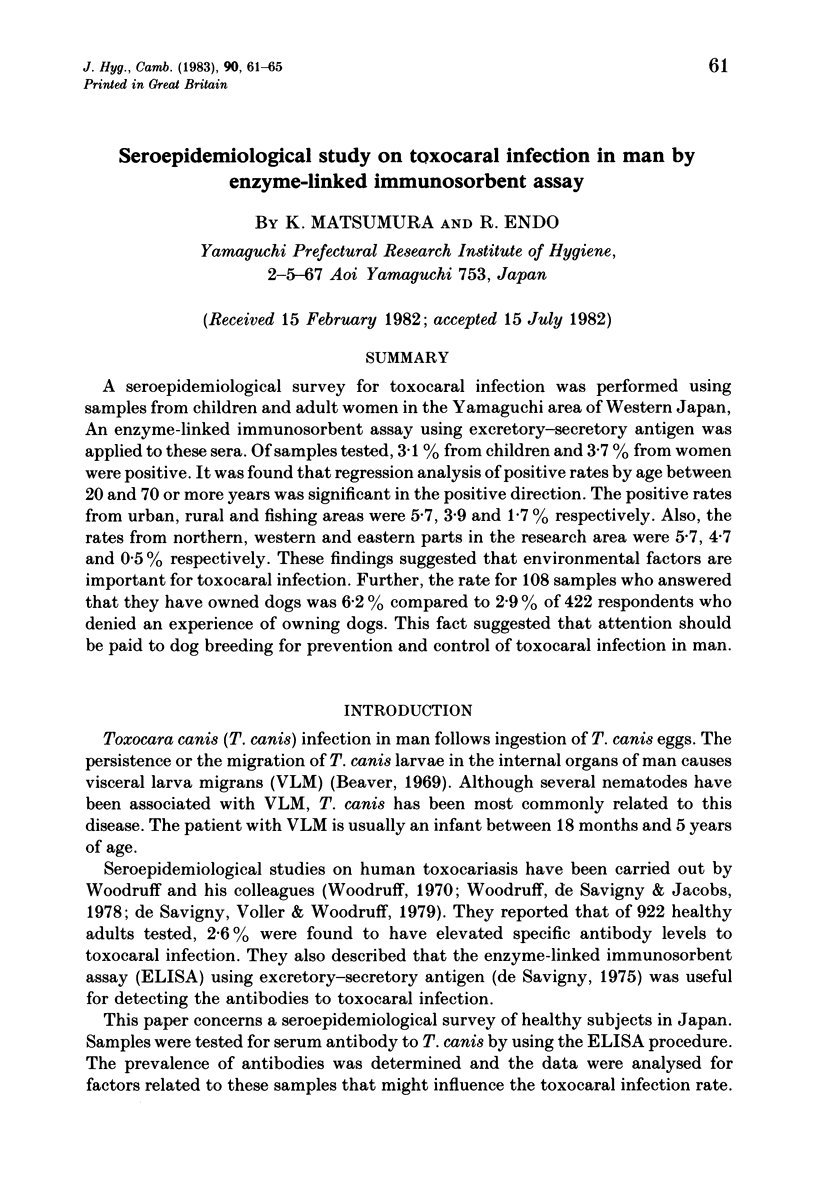
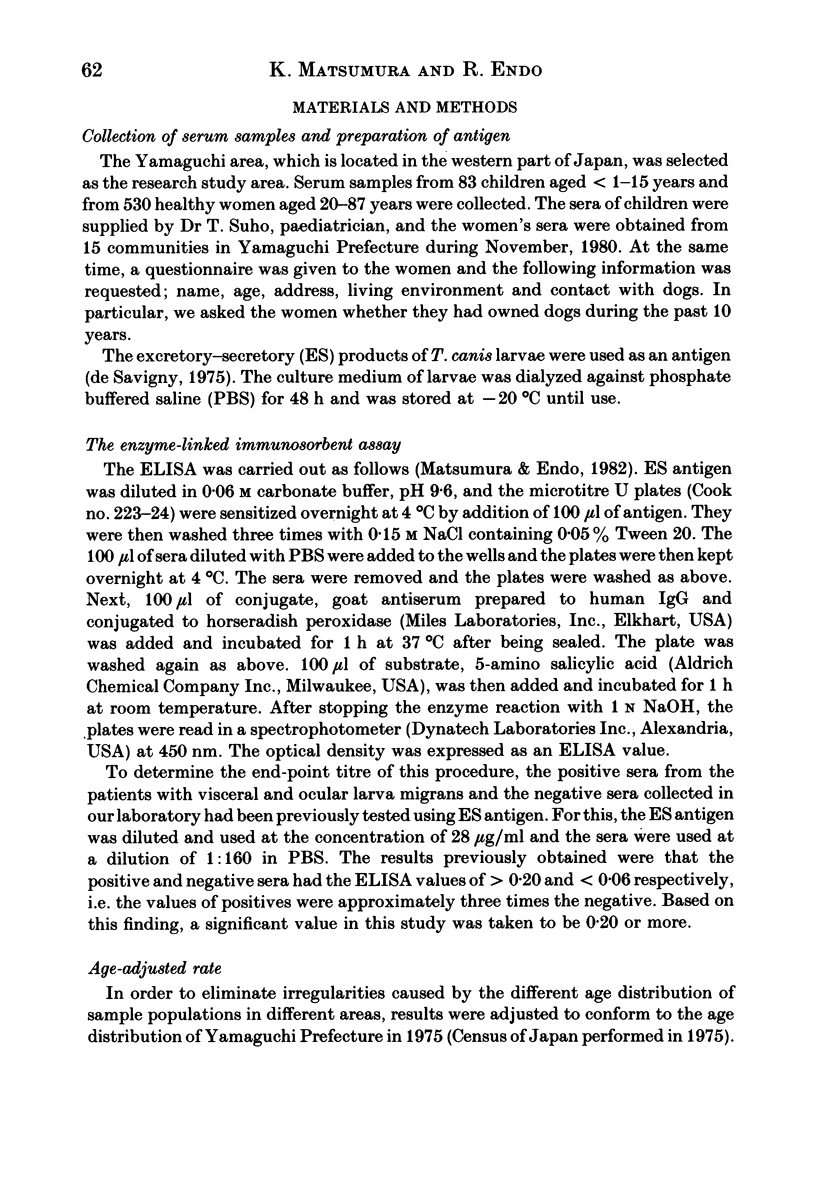
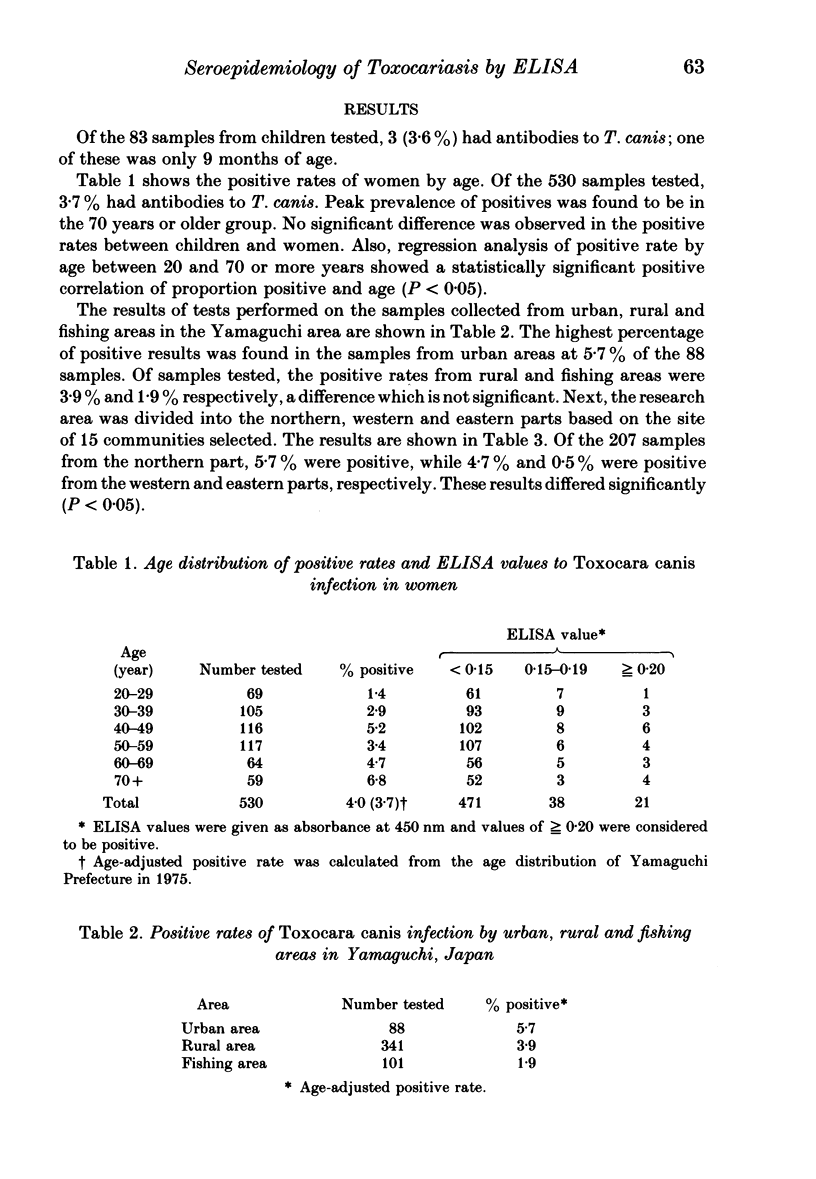
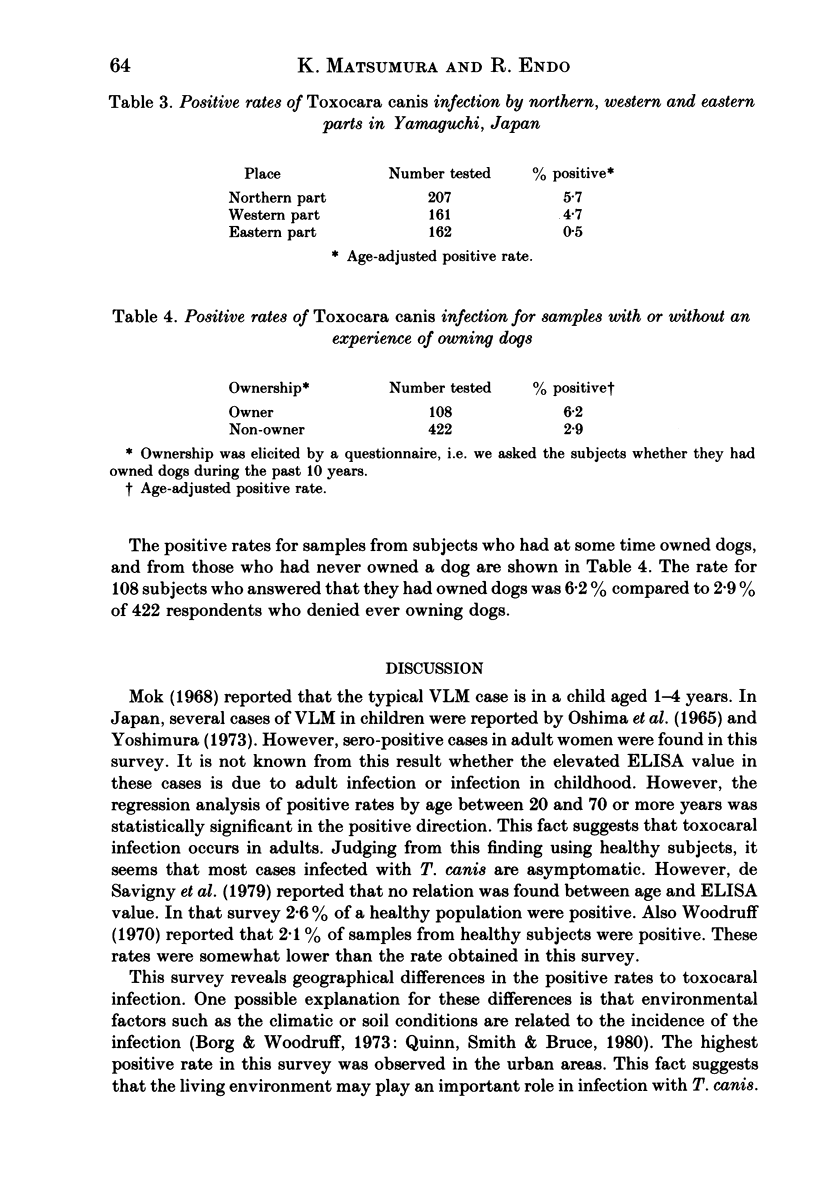
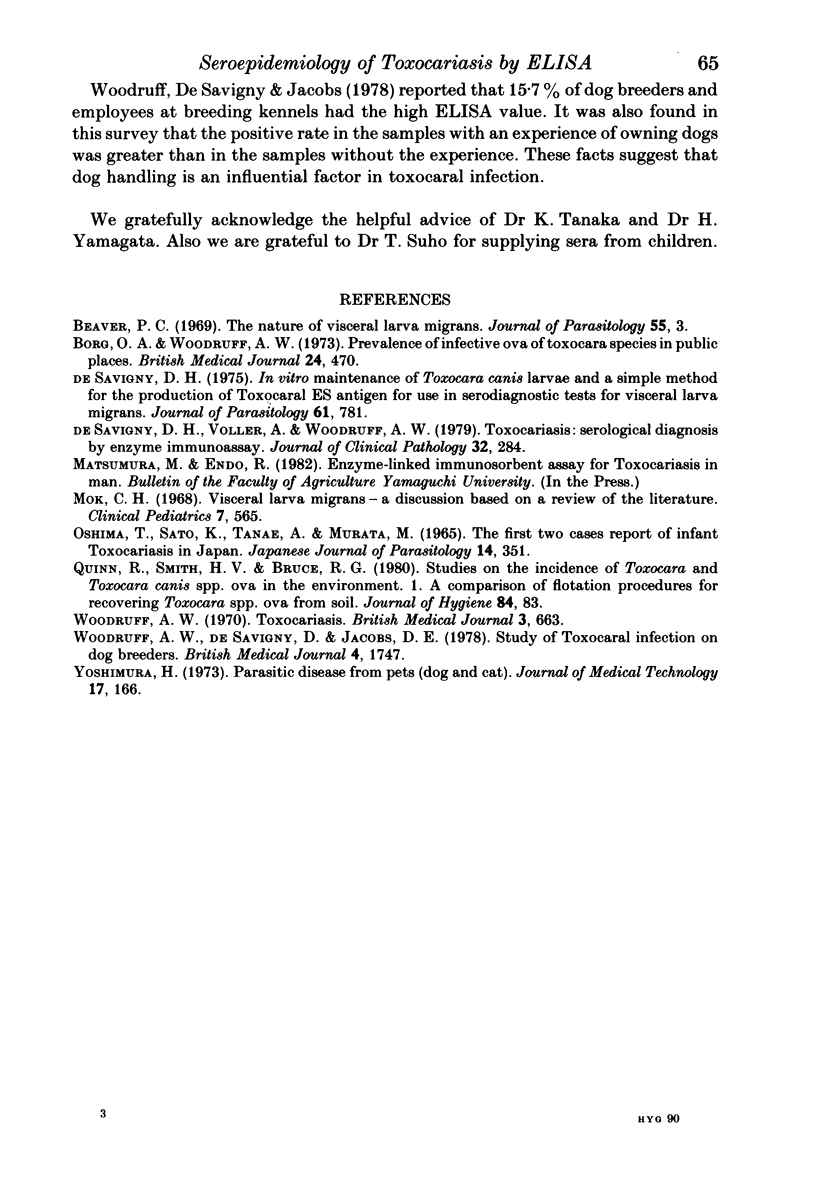
Selected References
These references are in PubMed. This may not be the complete list of references from this article.
- Beaver P. C. The nature of visceral larva migrans. J Parasitol. 1969 Feb;55(1):3–12. [PubMed] [Google Scholar]
- Borg O. A., Woodruff A. W. Prevalence of infective ova of Toxocara species in public places. Br Med J. 1973 Nov 24;4(5890):470–472. doi: 10.1136/bmj.4.5890.470. [DOI] [PMC free article] [PubMed] [Google Scholar]
- Mok C. H. Visceral larva migrans. A discussion based on review of the literature. Clin Pediatr (Phila) 1968 Sep;7(9):565–573. doi: 10.1177/000992286800700912. [DOI] [PubMed] [Google Scholar]
- Quinn R., Smith H. V., Bruce R. G., Girdwood R. W. Studies on the incidence of Toxocara and Toxascaris spp. ova in the environment. 1. A comparison of flotation procedures for recovering Toxocara spp. ova from soil. J Hyg (Lond) 1980 Feb;84(1):83–89. doi: 10.1017/s0022172400026553. [DOI] [PMC free article] [PubMed] [Google Scholar]
- Savigny D. H. In vitro maintenance of Toxocara canis larvae and a simple method for the production of Toxocara ES antigen for use in serodiagnostic tests for visceral larva migrans. J Parasitol. 1975 Aug;61(4):781–782. [PubMed] [Google Scholar]
- Woodruff A. W. Toxocariasis. Br Med J. 1970 Sep 19;3(5724):663–669. doi: 10.1136/bmj.3.5724.663. [DOI] [PMC free article] [PubMed] [Google Scholar]
- Woodruff A. W., de Savigny D., Jacobs D. E. Study of toxocaral infection in dog breeders. Br Med J. 1978 Dec 23;2(6154):1747–1748. doi: 10.1136/bmj.2.6154.1747-a. [DOI] [PMC free article] [PubMed] [Google Scholar]
- de Savigny D. H., Voller A., Woodruff A. W. Toxocariasis: serological diagnosis by enzyme immunoassay. J Clin Pathol. 1979 Mar;32(3):284–288. doi: 10.1136/jcp.32.3.284. [DOI] [PMC free article] [PubMed] [Google Scholar]


